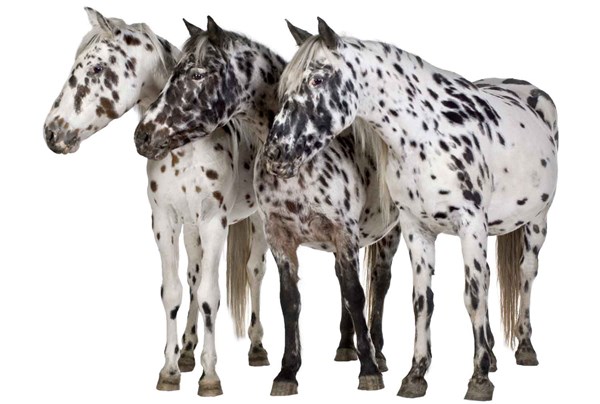 Credit: Thinkstock Appaloosa horses, known best for their white coat spotting patterns (termed leopard complex or LP), are eight times more likely than any other breed to develop ERU and four times more likely to go blind, suggesting genetics plays a major contributing role.
Credit: Thinkstock Appaloosa horses, known best for their white coat spotting patterns (termed leopard complex or LP), are eight times more likely than any other breed to develop ERU and four times more likely to go blind, suggesting genetics plays a major contributing role.A genetic study at the University of California, Davis, will look at equine recurrent uveitis (ERU) in Apploosa horses. The researchers are seeking owners of Appaloosa horses near UC Davis who would be willing to participate.
UC Davis noted that if you have any questions, you should contact the individual outlined at the end of the trial summary. For information about the services provided by the Veterinary Medical Teaching Hospital, please visit the Equine Services page through the Large Animal Clinic of the hospital. UC Davis noted that if you would like more information regarding equine research, education and public service, please contact their Center for Equine Health.
NEW! Equine Recurrent Uveitis in Appaloosa Horses
Title: Genomic investigation of Equine Recurrent Uveitis in Appaloosa horses
Purpose: Equine recurrent uveitis (ERU) is the leading cause of blindness in horses, marked by repeated episodes of inflammation of the uveal tract of the eye. Appaloosa horses, known best for their white coat spotting patterns (termed leopard complex or LP), are eight times more likely than any other breed to develop this disease and four times more likely to go blind, suggesting genetics plays a major contributing role. However, little is known about the specific genetic factors involved. The objective of this study is to determine the genetic factors contributing to ERU in Appaloosa horses.
Contact:
Dr. Mary Lassaline (lasutter@ucdavis.edu)
Dr. Rebecca Bellone (rbellone@ucdavis.edu)
Participation Requirements: Appaloosas with known pedigrees
Initial Evaluation for Participation: None.
Procedures:
- Examination of the horse’s eyes by a veterinary ophthalmologist
- Photography of the horse to document coat color and any abnormalities found in the eyes
- Collection of hair samples from the horse’s mane and/or a blood sample to analyze the DNA
- Discussion of the horse’s medical history
- Follow up phone calls or emails may be necessary if any questions about the horse’s medical history arise after the examination.
If any horse objects to having their eyes examined, to having mane hair pulled, or blood drawn, these procedures would not be performed.
Benefits: The results of this work may help to lower the incidence of this ocular disease in Appaloosas and other affected breeds, help breeders to make informed mating decisions, and be utilized by veterinarians to predict risk of developing disease for earlier diagnosis and treatment.
Owner Responsibilities: We expect that participation in this clinical trial will last for about 15 minutes but may take as long as one hour. If you allow your horse to participate in this study, you will be responsible for covering any injury sustained while participating and further diagnostics or therapy associated with the diagnosis of ERU if a presumptive diagnosis of ERU is made for your horse.
A printable flyer (PDF) is available.


